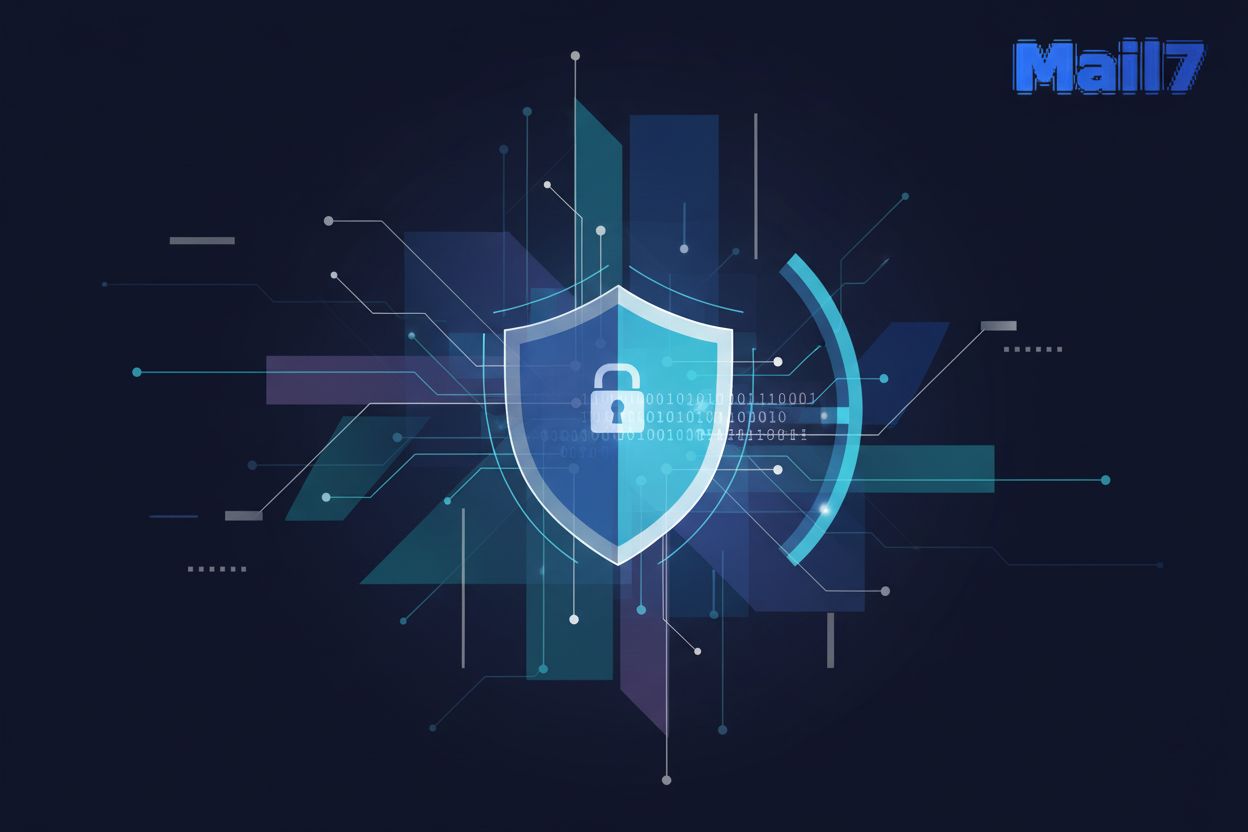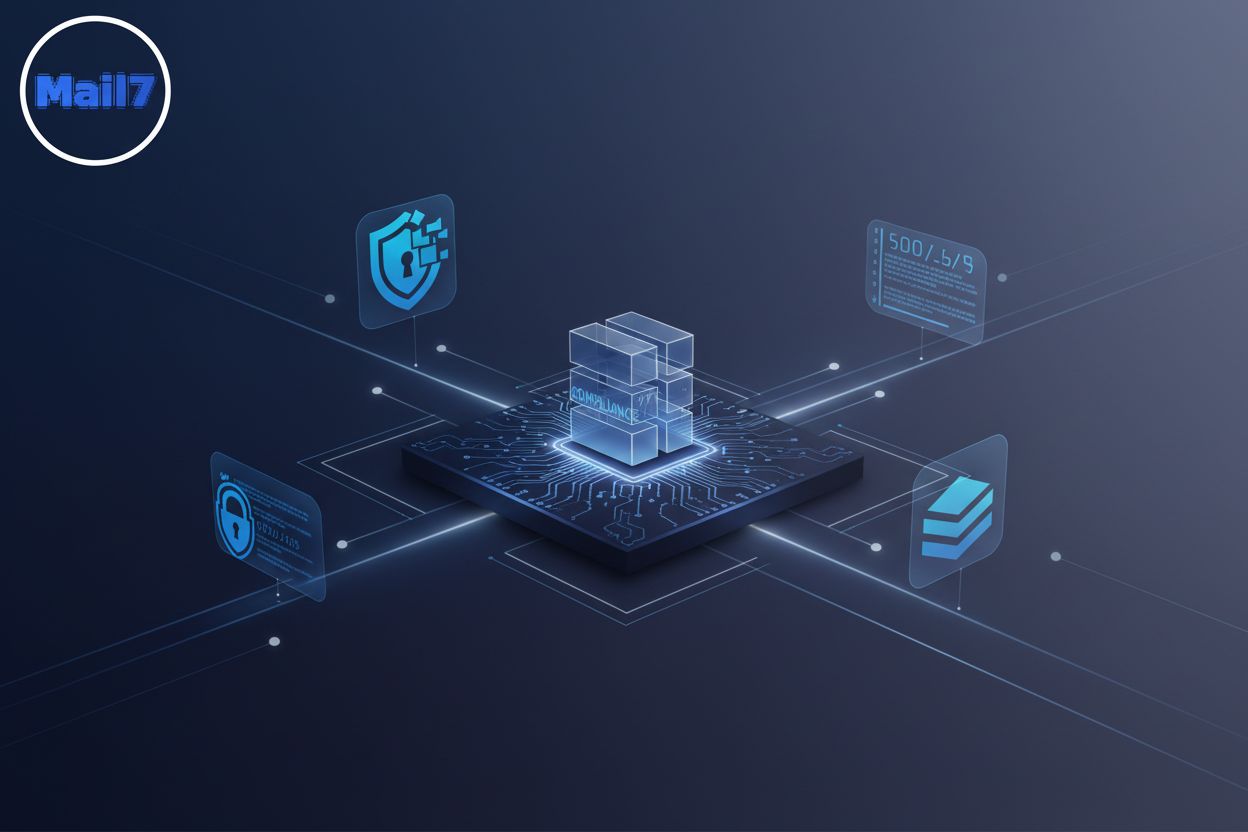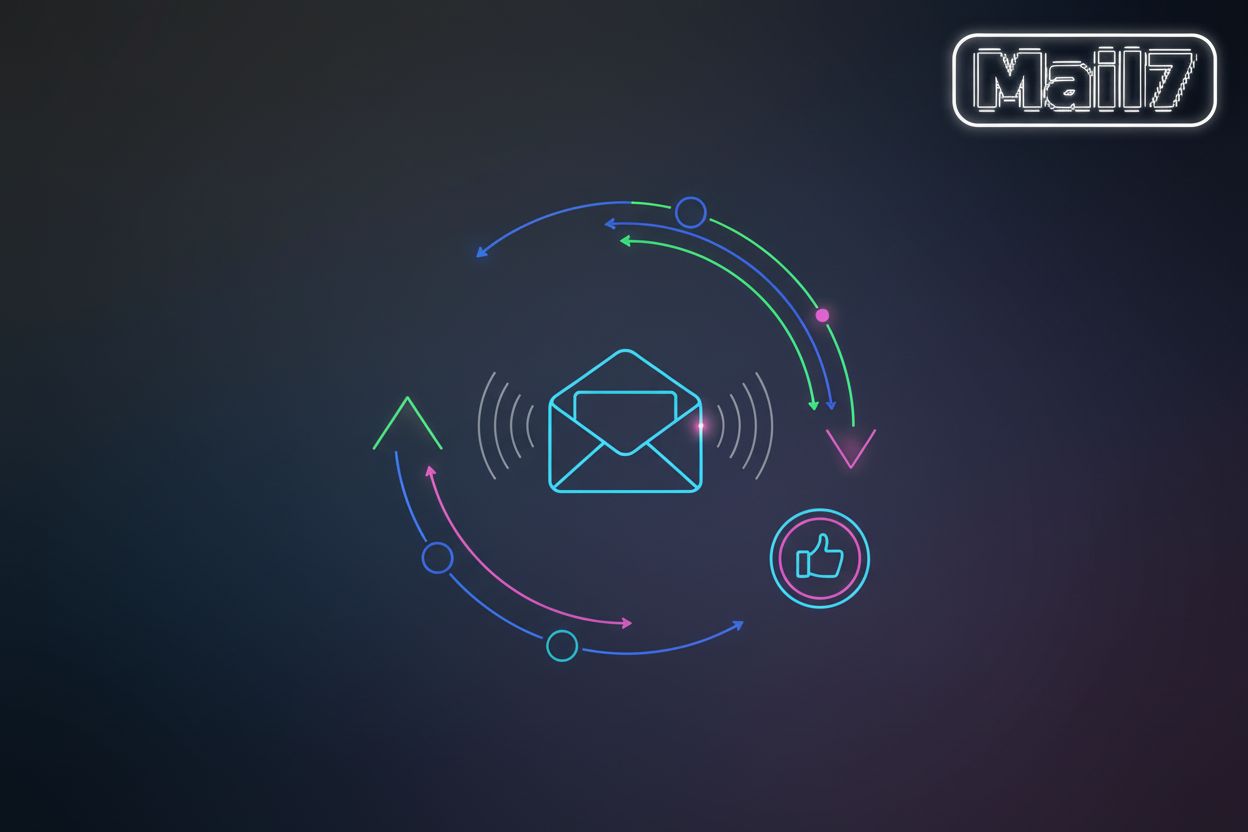The Ultimate Guide to Safe Email Practices
TL;DR
Understanding the Landscape of Email Threats
Okay, let's dive into the seedy underbelly of email... just kidding! But seriously, the threats out there are no joke. Did you know someone falls victim to phishing every single minute? That's wild.
So, what kinda stuff are we up against? Here's a taste:
Phishing and spear-phishing: These techniques tries to trick you into giving up sensitive information. It's like a con artist, but digital. For example, you might get an email that looks like it's from your bank asking you to "verify" your account, but it's actually a scam.
Malware distribution: Ever get a weird attachment you weren't expecting? It could be hiding malware. Imagine a healthcare provider getting a seemingly routine document, only to unleash ransomware that cripples their systems.
Business Email Compromise (BEC) scams: These are sneaky. Scammers impersonates ceo or other high-level employees to trick staff into transferring money or divulging confidential information.
Ransomware: speaking of healthcare, imagine the impact of a hospital who's email and patient records get hit with ransomware.
Email's a big ol' door for bad guys. It's one of the primary ways into our systems, and the numbers don't lie.
A 2024 study found that email is responsible for a whole lotta data breaches.
It's not just numbers; it's real-world consequences.
And that's just the tip of the iceberg, really. Next up, we'll get into those common email-based attacks in more detail.
Email Testing and Verification Techniques
Okay, enough with the boring stuff, right? Let's get into how you actually make email not a total disaster waiting to happen. 'Cause honestly, who has time for their inbox to be a ticking time bomb?
Email testing is kinda like giving your emails a pre-flight check. You wouldn't want a plane to take off with faulty engines, and you definitely don't want your marketing campaign landing in the spam folder.
- Ensuring deliverability and avoiding spam filters: It's like training your emails to be ninjas, sneaking past those pesky spam filters. If it doesn't land in the inbox, what's the point, right?
- Validating email content and links: Gotta make sure those links actually go where they're supposed to. Broken links are like a store with no doors – frustrating and pointless. Imagine a retail company sending out a promo with a broken link, ouch.
- Testing different email clients and devices: What looks amazing in Gmail might look like a hot mess in Outlook. Gotta make sure it's universally appealing.
- Improving user experience and engagement: A well-tested email is like a well-choreographed dance – smooth, engaging, and leaves a lasting impression.
While traditional testing methods are crucial, there are also specialized tools that can enhance your testing process, such as disposable email addresses. Ever need an email address for something sketchy, like signing up for a free trial you know you'll forget to cancel? That's where disposable emails come in.
Here's how a tester might use them: Imagine you're testing a new e-commerce site's signup flow. You want to create multiple test accounts to see how the system handles different user profiles and order scenarios. Instead of using your personal email or creating numerous permanent accounts, you'd use a disposable email service. You'd generate a temporary email address like [email protected], use it to sign up for the service, and then check the temporary inbox for the confirmation email. This way, you can quickly create and test accounts without cluttering your real inbox or leaving a trail of personal data.
- Creating temporary email addresses for testing: It's like using a fake ID at a club – you get in, but you're not really "you." Great for testing forms without cluttering your real inbox.
- Benefits of disposable emails for privacy and security: Keeps your real address out of the hands of spammers and data harvesters. Think of it as a digital condom, lol.
- Integrating disposable email apis into testing workflows: For developers, this is gold. Automate the creation and testing of emails without exposing real accounts. mail7 is a great example of a solution that offers this functionality, allowing you to create disposable email addresses and access real-time emails to automate your testing workflow.
These are like having a bouncer for your mailing list – only the cool kids (aka valid email addresses) get in.
- Real-time email address verification: Before someone even hits "submit," you know if that address is legit. No more wasting time on fake accounts.
- Syntax and domain validation: Catching typos and bogus domains before they become a problem. Think "gamil.com" instead of "gmail.com."
- smtp testing and mx record lookup: Making sure the email server is actually up and running. It's like checking if the venue has power before the band starts playing.
- Identifying disposable email addresses (deas): Kicking out the freeloaders using temporary emails. Good for weeding out the less-than-serious signups.
- Detecting spam traps and honeypots: Avoiding the black holes that can ruin your sender reputation. It's like knowing which streets to avoid in a bad neighborhood.
So, yeah, email testing and verification is kinda important if you want to, you know, actually reach people and not get your domain blacklisted.
Next up, we'll dive into those common email-based attacks in more detail.
Implementing Robust Email Validation
Okay, let's talk email security—specifically, keepin' those digital doors locked tight. You think you're safe, but are you really? It's like leaving your house unlocked, hoping no one will wander in and swipe your stuff.
Server-side validation is your first line of defense. It's where you set up the big guns to make sure only legit emails get through.
- DKIM, DMARC, and SPF records are your domain's ID badges. They tell receiving servers, "Yep, this email really came from us."
- Configuring smtp servers for secure sending is like hiring a bodyguard for your emails. It encrypts the message so no one can eavesdrop.
- Plus, it's crucial for preventing email spoofing and phishing attacks, so those scammers can't pretend to be you and trick your customers.
Once you've ensured the validity of your emails, the next crucial step is to protect their content during transit and at rest.
Email Encryption and Secure Communication
Okay, so you've got your email security locked down tight... or so you think. Ever wonder if those encrypted messages are really as safe as they seem? Like, what if someone's peeking behind the scenes?
It's a bit like sending a secret message in invisible ink, hoping no one figures out how to read it. But fear not, we're gonna get into the nitty-gritty of email encryption and secure communication, so even the sneakiest snoopers won't stand a chance.
understanding e2ee and its benefits: E2EE ensures that only the sender and receiver can read the messages. Imagine a retail company sending sensitive customer data; with e2ee, even if the email gets intercepted, the data remains unreadable to anyone but the intended recipient.
using pgp/gnupg for email encryption: Pretty Good Privacy (PGP) and GNU Privacy Guard (GnuPG) are popular e2ee methods. For example, a healthcare provider can use PGP to encrypt patient records, ensuring compliance with HIPAA regulations.
implementing s/mime for secure email communication: Secure/Multipurpose Internet Mail Extensions (S/MIME) is another e2ee standard. A financial institution might use S/MIME to secure communications between departments, protecting sensitive financial data.
managing encryption keys and certificates: Proper key management is crucial. If you lose your private key, you're locked out of your own encrypted emails! Always back up your private keys securely, perhaps using encrypted USB drives or secure cloud storage. In case of loss, having a robust backup strategy is your only hope. Consider implementing a key recovery process with trusted individuals or a dedicated service.
securing email transmission with tls: TLS encrypts email communications between servers. Think of it as a secure tunnel for your emails as they travel across the internet.
configuring tls settings on email servers: Setting up TLS on your email server is like installing a high-tech security system. If you don't configure it properly, it could be vulnerable to attacks.
verifying tls certificates to prevent mitm attacks: Man-in-the-Middle (MITM) attacks are a serious threat. Regularly verifying your TLS certificates ensures that the connection is legitimate and hasn't been compromised.
implementing secure email gateways for enhanced security: Secure Email Gateways (SEGs) acts as a gatekeeper for your email traffic. It inspects incoming and outgoing emails for threats, like spam and phishing attempts.
features of secure email gateways: anti-spam, anti-phishing, data loss prevention: SEGs come packed with features. Anti-spam filters block unwanted emails, anti-phishing tools detect fraudulent messages, and Data Loss Prevention (DLP) prevents sensitive info from leaving the organization.
integrating secure email gateways with existing infrastructure: Getting an SEG to play nice with your current email setup is key. Proper integration ensures seamless operation and comprehensive protection.
So as you can see, it's not enough to just slap on some encryption and call it a day. A layered approach, combining e2ee, TLS, and SEGs, is the best way to keep your emails safe from prying eyes.
Next up, let's explore those compliance standards and regulations that govern how we handle sensitive data.
Automated Testing and QA for Email Security
Okay, so automated testing and qa – sounds super technical, right? Honestly, it kinda is- but; stick with me, because it's essential for keeping your email secure. Think of it as stress-testing your digital defenses.
First things first, you gotta get your lab set up. We're talking using frameworks like Selenium or Cypress to automate those tests. These tools are great for email security testing because they can automate browser interactions, allowing us to simulate user actions like sending emails, clicking links, and verifying content. This lets us test our email security from a user's perspective, finding vulnerabilities that might otherwise be missed. It's like teaching robots to try and break into your emails, so you know where the weak spots are.
Think about creating test cases for all kinda scenarios. What if someone sends a huge email with tons of recipients? Or what if there's a weird attachment that might be malware?
Integrate this testing into your ci/cd pipeline. That way, every time you update your email system, these tests run automatically. It's like having a lil' security guard constantly on duty.
Now for the fun part—well, fun in a "let's see what can go wrong" kinda way. You gotta simulate attacks to see how your system holds up.
Create realistic phishing simulations. Craft emails that looks exactly like they're from a bank or a coworker. Then, see if your filters catch 'em.
Test how your system respond to malware-infected attachments. No, don't actually unleash malware, but use safe test files to mimic the behavior.
Even with all this testing, you can't just sit back. You gotta keep an eye on things.
Implement comprehensive logging mechanisms. Record everything about your email traffic—who's sending what, when, and where.
Use security information and event management (siem) systems, to analyze these logs for suspicious activity. It's like having a detective sift through the clues.
All this automated testing? It's not just about finding problems; it's about building confidence in your email security. Next, we'll be diving into compliance standards, where things get really interesting, trust me.
Best Practices for Secure Email Development Workflow
Okay, so you've tweaked your system, squashed bugs, and now you need a secure space to actually, you know, build stuff. That's where a secure email development workflow comes in.
Think of it this way: it's like building a house on a solid foundation.
- Secure Coding Practices: Avoiding common coding vulnerabilities is key. It's about using secure coding standards and doing regular code reviews to catch problems early, like a finance company ensuring their email system doesn't accidentally expose client data.
- Dependency Management: Keeping your dependencies up-to-date is crucial. Imagine a retail company whose email system gets compromised because of an old, vulnerable library. To manage dependencies securely, use package managers with built-in security features, run regular vulnerability scans on your dependencies, and consider tools like Dependabot or Snyk to automate the process.
Remember that publications from Andrew Dickson verify TLS certificates prevent MITM attacks.
So, you've got a pretty secure email setup now, right? Next up: compliance standards.
Staying Ahead of Emerging Email Threats
Okay, so you've made it this far, nice! You're practically an email security ninja now. But, it's not a "one and done" kinda deal, right? Things are always changing, and email threats are no exception. Like a bad penny, they just keep turning up.
Continuous Monitoring: Keep an eye on your systems. Set up alerts for unusual activity, like a sudden spike in bounced emails or weird login attempts. It's like having a security camera that actually gets watched. To identify new threats, leverage threat intelligence feeds, subscribe to security news alerts, and monitor security forums.
Security Communities: Get involved! Join forums and groups where security pros share tips and war stories. It's like having a network of spies all working for the same side.
Improve Practices: Don't get complacent. Regularly review your email security policies and adapt them to address the latest threats. For instance, a retail company might update its training after a new type of phishing attack targets their employees, or they might need to update their authentication methods or filtering rules.
Adaptation is Key: As new threats emerge, it’s crucial to update your security measures. Think of it as an ongoing arms race – you gotta keep your defenses stronger than their attacks.
So, stay vigilant, keep learning, and never stop improving your email security. It's a messy world out there, but with the right approach, you can keep your inbox safe and sound.
Next up: Conclusion






